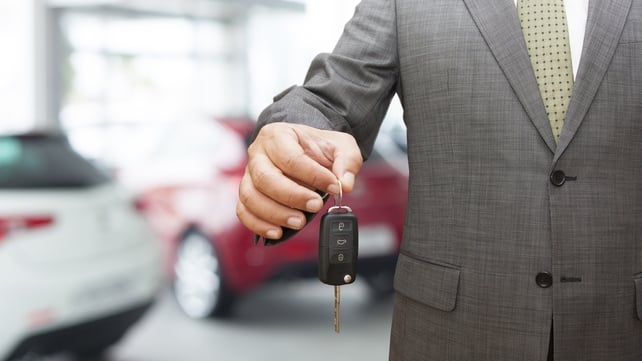1. Use savings to pay for your car
Pro - saving up is the cheapest option as you do not have to pay interest on a loan.
Con - it takes time to save so if you need a car urgently then this may not be an option for you.
If you want to buy a car but are in no rush it is a good idea to set up a savings account. Make sure you get the best interest rate on your savings by checking out the regular savings account comparison on the CCPC’s consumer website. Rates from different providers can vary between one and four percent depending on which savings account (specific t&c apply to certain accounts that offer the customer higher interest rates) you choose so make sure you shop around first and get the most for your money. You can also open a savings account with your credit union.

2. Take out a personal loan
Pro - unlike some forms of car finance, you own the car while paying off the loan so if you got into financial difficulties you could sell the car.
Con – you will be paying interest on the amount you borrow and your credit rating can be affected if you miss repayments.
If you need a car urgently and don’t have savings, you might be thinking of opting for a loan. Check out the CCPC’s personal loan cost comparison on the consumer website, to see where you can get the best value loan and how long it will take you to pay it back. Remember, credit unions also offer savings and loans for their members. You can get more information on credit union membership from the Irish League of Credit Unions, the Credit Union Development Association or your local credit union. You can see the CCPC’s loan calculator to work out repayments on loans of different amounts. The cost of credit can vary by as much as €802.44 between different providers for a €13,000 loan over three years. Aim to pay off the loan before you expect to get rid of the car, so you are not paying the loan back after the car is gone. Use the budget planner on the CCPC’S consumer website to work out how much money you have left over at the end of each month based on your current income and think about whether you can really afford a car loan.
3. Choose hire purchase
Pro – a hire purchase agreement can be a convenient option because the garage you are buying from may also arrange your finance. It saves you from having to visit your bank or credit union to arrange a personal loan.
Con – you don’t own the car until it is fully paid off therefore you cannot sell the car if you run into problems making your repayments.
With hire purchase, the garage you are buying the car from acts as an agent for a finance company and earns commission to arrange the finance for you. The garage is essentially acting as a credit intermediary and must be authorised on behalf of the finance company to do this. You can check if the garage is authorised by checking out the register of Credit Intermediaries on the CCPC corporate site. When you use a hire purchase agreement to buy a car, the motor dealer sells the car to the finance company. The finance company then rents the car to you for an agreed period of time in return for a set monthly repayment over a number of years. Hire purchase is different to a personal loan in that you don’t own the car until you have made the last repayment – you are hiring the car for a period of time, typically 3-5 years. This means you cannot sell the car if you run into problems making your repayments. So check what you are being offered first and know what you are signing up to.

4. Choose a Personal Contract Plan (PCP) agreement
Pro – The monthly repayments are relatively small, which can make the plan seem more affordable.
Con - you cannot sell the car if you run into problems making your repayments and you also have a large final payment called the "guaranteed minimum future value" (GMFV).
Similar to a hire purchase agreement, a PCP is an agreement between the consumer and the finance company. You will be making repayments on the car for at least three years, or the duration of the agreement. This means you cannot sell the car if you run into problems making your repayments. However, you can end a PCP at any time and avail of what is called the ‘half rule’. The half rule allows you to return your car but you have to pay half the purchase price. If you have not yet paid half the purchase price you can still return the car but you will owe the difference between the payments you have made and half the purchase price. A PCP normally involves three payment stages:
- Paying a deposit – this is normally 8-10% of the value of the car
- Paying monthly repayments – which are usually relatively small
- Paying a large final payment – this may be called the "guaranteed minimum future value" (GMFV) or "balloon payment".
When you come to the end of a PCP you can keep the car and pay the final payment, hand back the car and make no further payments or trade in the car for a new one. There are often very specific obligations on you contained in the terms as well, around things like servicing and maximum mileage allowed. For instance, there’ll usually be a mileage restriction in the region of 15,000 to 20,000 km per year. If you go over this it will affect the final value of the car.
Check out the CCPC’s consumer website, for more information on buying a car, including information on payment options, checks to carry out before you buy and what you can do if things go wrong.


